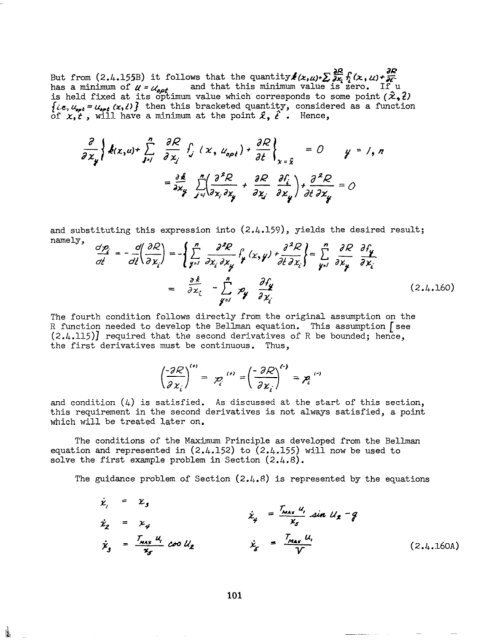guidance, flight mechanics and trajectory optimization
guidance, flight mechanics and trajectory optimization
guidance, flight mechanics and trajectory optimization
You also want an ePaper? Increase the reach of your titles
YUMPU automatically turns print PDFs into web optimized ePapers that Google loves.
But from (2.4.155B) it follows that the quantity~(x,L()+C~~~(;t,u)c-<br />
has a minimum of u=uopt <strong>and</strong> that this minimum value is‘lero. IFU<br />
is held fixed at its optimum value which. corresponds to some point(z,2)<br />
{ia +t = u,,t (*,,!I] then this bracketed quantity, considered as a function<br />
of x,t, will have a minimum at the point f, z . Hence,<br />
Z=x^<br />
=0 f=/,n<br />
<strong>and</strong> substituting this expression into (2.4.157), yields the desired result;<br />
namely,<br />
d'=-<br />
df<br />
The fourth condition follows directly from the original assumption on the<br />
R function needed to develop the Bellman equation. This assumption [see<br />
(2.4.W)] re q uired that the second derivatives of R be bounded; hence,<br />
the first derivatives must be continuous. Thus,<br />
<strong>and</strong> condition (4) is satisfied. As discussed at the start of this section,<br />
this requirement in the second derivative s is not always satisfied, a point<br />
which will be treated later on.<br />
The conditions of the Maximum Principle as developed from the Bellman<br />
equation <strong>and</strong> represented in (2.4.152) to (2.4.155) will now be used to<br />
solve the first example problem in Section (2.4.8).<br />
The <strong>guidance</strong> problem of Section (2.4.8) is represented by the equations<br />
101<br />
ae<br />
(2.4.160)

















